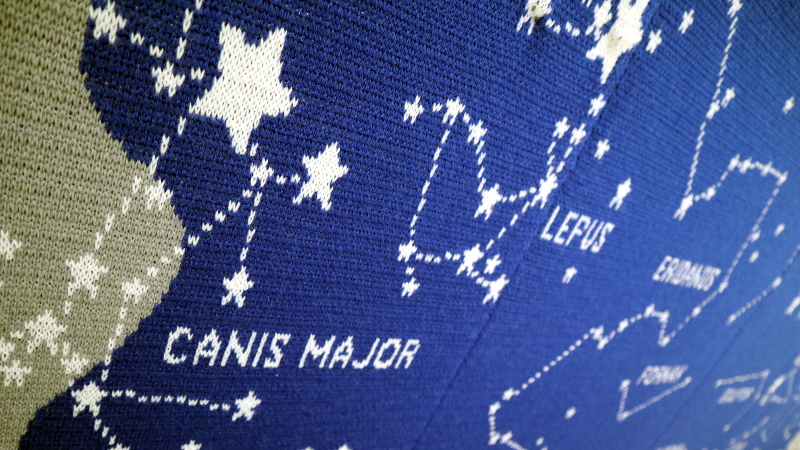A large hacker camp attracts attendees from all over the world, and at the recent Electromagnetic Field in the UK there were certainly plenty of international visitors. Probably one of those with the longest journey was [Sarah Spencer] from Australia, and she deserves our admiration not just for her work but also for devoting much of her meagre luggage space to the installation she’d brought over for the event. In the lounge tent you could find the Knitted Universe, a map of the night sky with light-up Neopixel constellations covering an entire wall, and among the talks you could find her in-depth description of how she created it by hacking a 1980s Brother knitting machine into a network printer.
She starts with a potted history of knitting machine hacking, leading to the use of an emulated floppy drive replacing the mechanical item used to store scanned designs on the original hardware. She took an existing hack for a 16-bit Brother knitting machine and re-wrote it for her later 32-bit model, and then created a web interface for it called Octoknit which runs upon a Raspberry Pi. We’re then taken through the operation of a knitting machine and her further adventures in reverse engineering the file format. She ends up with a dithered 4-colour image, but there remains a problem. On the Brother, colour changes are performed by pressing a button, so something to automate the process was required. This task was taken on by her husband, who created an Arduino-driven mechanical button-presser in what had become a team effort. With this in place her only manual task became a periodic adjustment of the weight that preserves the tension in the finished knit.
Finally she moves on to the Knitted Universe itself, which at that point had become something of a viral sensation. Those of us who have created hacker camp installations will appreciate the volume of work that went into the piece, and she truly deserves the applause at the end of the talk. Watch it below the break, it’s a fascinating half-hour.















I wanted to see this but wasn’t sure where it was on display. Too many other interesting things to see an do, so I didn’t get time to hunt for it.
It’s in the lounge tent!
I know that now.
“On the Brother, colour changes are performed by pressing a button, so something to automate the process was required.”
for clarification, this is not a digital button but a mechanical process. When i first read the sentence i thought, why not just interface with the switch directly from the raspberry pi lol
Ah, you could say… It makes, the fabric of space… :D
> who created an Arduino-driven mechanical button-presser
Actually, it looks like he replaced the entire manual color-changer with an automated one he hacked together.
A mechanical button-presser would probably have been easier, but clunkier.
Well, overcoming the spring tension on the original changer was a bit of a hurdle. They are very firm to push. There’s a video on my first blog post about the topic and you can here the click as it the buttons are pressed. (http://heartofpluto.co/2017/04/25/building-a-better-colour-changer-part-1-designing-hardware/)
There was also a consideration that while I was hacking around there should be a fall back so Sarah could keep knitting when I (inevitably) screwed up the auto changer, so gluing or attaching anything to the existing changer was a dicey prospect.
Fortunately, all the prototypes have been pretty reliable. Sarah is still using the Mk2, but there’s Mk3 hanging in the wings ready to go when I build up enough courage to disrupt her process with an untested new build.
So can the manual part be automated with a lead screw to do the slide part and actuators to do the button pressing? Seems even the manual device can be hacked into being automated like Ms. Spencer has I think noted, though I didn’t watch the whole presentation and will come back to later. Interesting… I didn’t even know knitting machines existed.
I see now… I did a fast forward cursory review of the video. Very awesome! Neat and I read the article now so cheers to the Mr also!